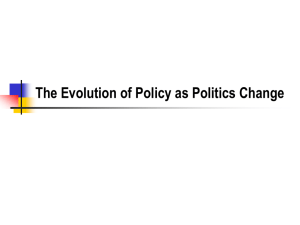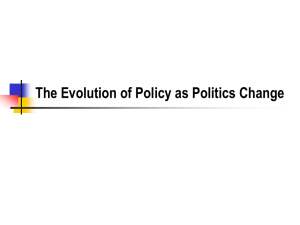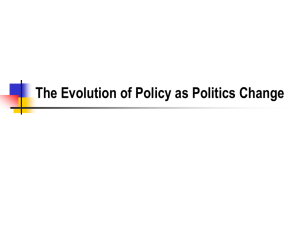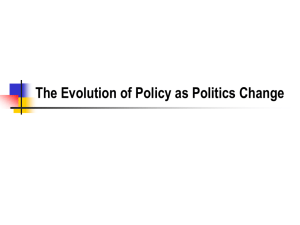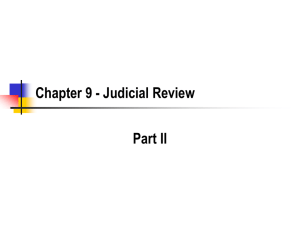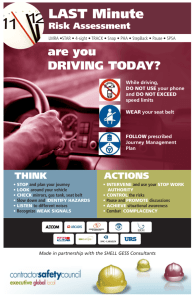Overton Park v. Volpe - United States Supreme Court 1971
advertisement
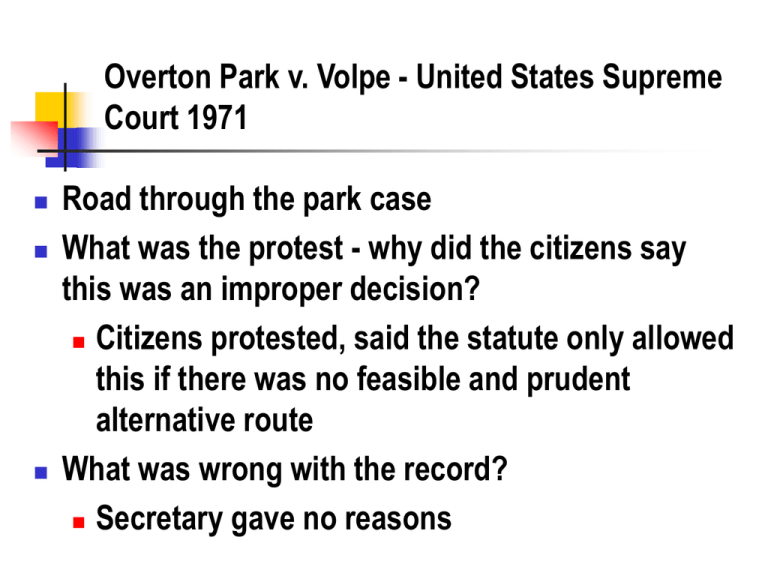
Overton Park v. Volpe - United States Supreme Court 1971 Road through the park case What was the protest - why did the citizens say this was an improper decision? Citizens protested, said the statute only allowed this if there was no feasible and prudent alternative route What was wrong with the record? Secretary gave no reasons Feasible and Prudent?? What does feasible mean? How can it conflict with prudent? Why is it always cheaper and easier to build roads through parks and public lands? Who are the opposing constituencies? What indicates that this is a compromise law? District Court District court gave Secretary a summary judgment, affirmed by the Cir. These were based in part on briefs that went beyond the original record Standard of Review Is this a rule making? Is it an adjudication, i.e., was there a trial type proceeding? What about the public hearings? Were they to make decisions or to take input? Were they done by the feds at all? Did the stature require de novo review? What is the Hard Look Review? "thorough, probing, in-depth review" Hard look kicks in after Chevron step 1 The court still defers to the agency's policy making role The court looks hard to make sure the agency considered all the relevant factors in making the policy Is this really meddling in policy making? What is the cost to the agency of reviewing lots of factors in depth to satisfy the court? United States Supreme Court The United States Supreme Court said that the secretary did not have to make formal findings The record needed to support the action and it could not be supplemented by briefs. If the secretary does not make findings, then the district court has two alternatives: Remand, or Require testimony of agency decisionmakers, effectively building the missing record Why is the second alternative not attractive to the agency? Environmental Regulation Permitting new stuff What is the effect of delay here? Enforcing rules against old stuff Who pushes for delay here? Why is it harder to push for action than for delay? Why could the environmentalists get the court to push the agency in the regulators? Atomic Power What are the fears? Administrative delay stopped the industry Hugely expensive plants whose profitability depended on rate setting decisions that are subject to politics What new concerns has shifted environmental fears since the 1980s? The Evolution of Policy as Politics Change The Seat Belt Saga First, there is popular concern about accidents Then interest groups Individual stories - MADD is an example Nader and Public Interest Unsafe at any Speed - 1965 Insurance industry The Seat Belt Saga II Then Congress passes the Traffic and Motor Vehicle Safety Act 1967 - regulation requiring seatbelts 1972 - realized that people were not wearing the seatbelts Regulation requiring automatic seatbelts or airbags by 1975 The Seat Belt Saga III Required cars between 1973 and 1975 to have automatic seatbelts or ignition interlocks Chrysler v. DOT affirmed the regs Industry choose interlocks - why? 1974 - Congress passed a law banning regs requiring interlocks and said that all future regs on passive restraints had to be submitted to Congress for legislative veto Chada killed that The Seat Belt Saga IV DOT under Ford withdrew the regs DOT under Carter (a few months later) passed new passive restraint regs for 1982 and Congress did not veto them 1979 - Regs were affirmed in Pacific Legal Foundation v. DOT The Seat Belt Saga V 1981 - DOT under Reagan withdrew the regs because the car companies were going to use automatic seatbelts that could be disconnected. 1983 - Motor Vehicles Manufacturers Assoc. v. State Farm hit the United States Supreme Court Motor Vehicle Manufacturers v State Farm Mutual Auto Why does State Farm care? What was the key agency law issue in this case? How was this relevant to the transition from Clinton to Bush? How did it drive the midnight rulemaking? What was the rationale for the court's ruling? How is this different from saying that agencies are bound by precedent? The Seat Belt Saga VI 1984 - DOT (Libby Dole) promulgated a reg requiring automatic seatbelts or airbags in all cars after 1989, unless 2/3 of the population were covered by state seatbelt laws, and the laws met certain criteria What did some states do? $5 penalty No stop No meaningful seatbelt defense Most State laws did not meet the criteria The Seat Belt Saga VII 1997 - most newer cars had airbags 1998 - airbags kill grannies and little kids! Nothing new - known at the time Save many more 1999 - You can get your airbag disconnected Products liability issues? What Else Affects Automobile Safety? Drunk driving laws? Anti-lock brakes? Stability control systems? Speeding? Why not lower speed limits? Where do most accidents happen? Limits on teen age drivers? Regulation of Automobile Gas Mileage What are the benefits of reduced oil consumption? For individuals? For the country? How do you make cars more efficient? What are the trade-offs? Convenience Cost/safety What limits safety of SUVs? Corrosion Proof Fittings v. U.S. E.P.A., 947 F.2d. 1201 (1991) Rulemaking under the Toxic Substances Control Act This act is not self-implementing Nothing is regulated until the agency set standards How long was this rule in process? What are the Requirements of the Act? "Reasonable basis" to believe that there is an "unreasonable risk of injury" What do you consider to decide if the risk is unreasonable? Does this mean no risk? The regulation must be "the least burdensome" What is the burden on the agency when it bans something? Cost/Risk/Benefit What is asbestos really good for? What are the potential risks for substituting other materials? Do we know that these materials are safe? Ever work with fiberglass insulation? How many lives were they going to say? What was this going to cost? Why did the agency really ban asbestos? Judicial Review Why is it easier for the court to second-guess the agency than for the agency to do the cost benefit analysis? Can any risk/cost/benefit analysis be complete? What are the conflicts between discounting to present day costs and trying to monetize future life savings? What was the long term impact of the agency getting hammered in this case? How about when the Corp got hammered over the environmental impact statement for Lake Pontchartrain flood gates?
